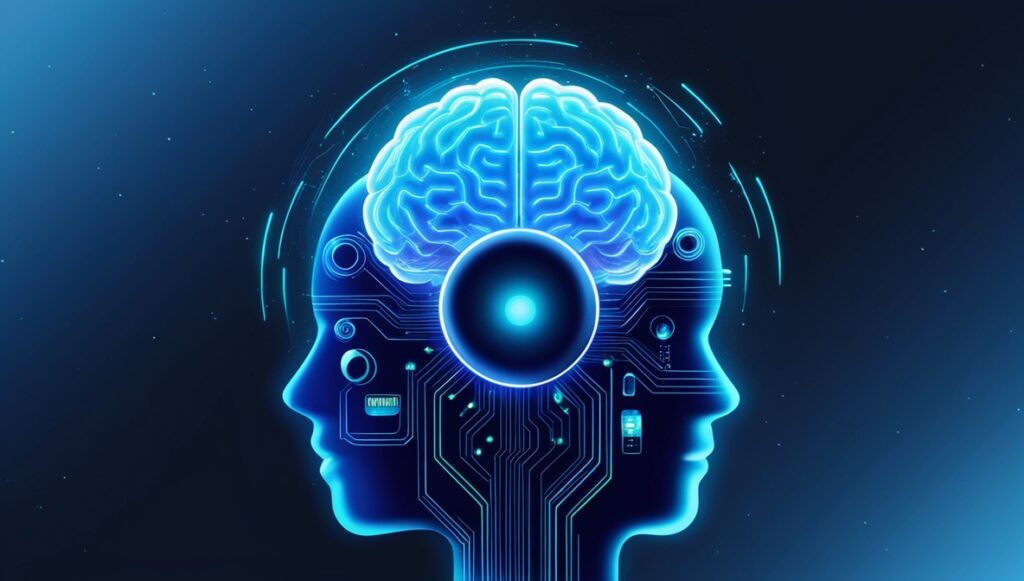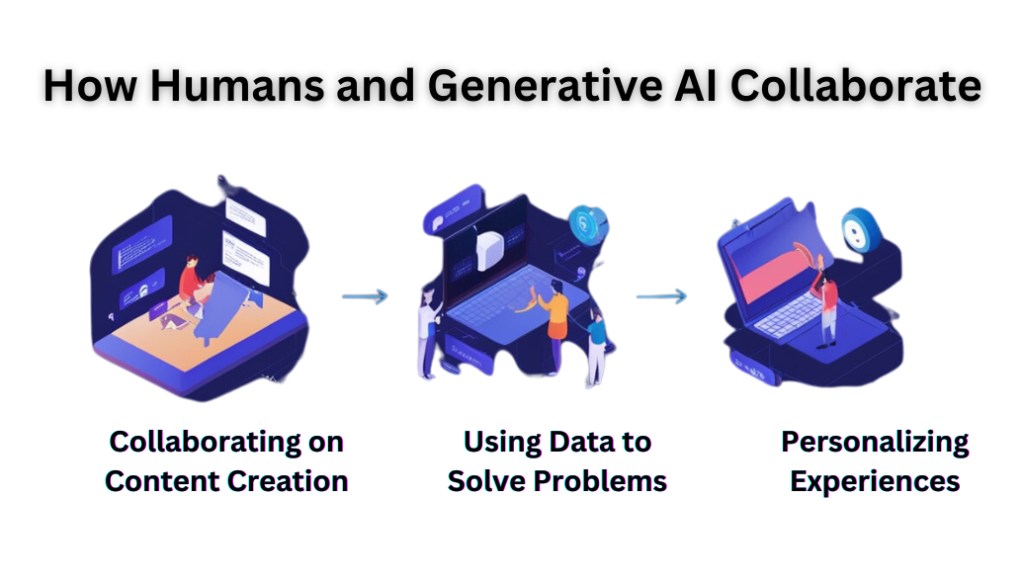Generative AI has quickly become one of the most important technologies today. As AI becomes a part of our daily lives, the relationship between humans and generative AI is getting stronger. But what does this relationship mean for us? How can we understand it better, and how can we benefit from it?
Generative AI is different from traditional artificial intelligence because it can create things on its own. It can write articles, draw pictures, and create other creative content based on what it has learned. This connection between humans and generative AI offers exciting opportunities but also brings challenges we need to think about carefully.
This article will dive deep into the relationship between humans and generative AI. We’ll explore its benefits, challenges, ethical issues, and how we can maximize this human-AI working together. Let’s get started!
What is Generative AI?

Generative AI is a type of artificial intelligence that doesn’t just answer questions or give suggestions. Instead, it can create new things based on what it has learned, like:
- Text: Writing articles, stories, and reports.
- Images: Creating pictures, drawings, and artwork.
- Music: Composing songs or tunes.
- Videos: Creating short clips or full-length videos.
Generative AI uses machine learning and neural networks to learn from a lot of data. After learning from this data, it creates content that looks like something a human would make.
In simple words, generative AI helps machines learn how to create, not just understand.
Why the Relationship Between Humans and Generative AI Is Important
Understanding the relationship between humans and generative AI is important because it impacts many parts of our lives, from work to entertainment. This human-AI collaboration is changing how we think about creativity, productivity, and ethics. Here’s why this relationship matters:
Improving Human Creativity
Generative AI gives humans powerful tools to be more creative. Writers, designers, musicians, and even scientists use AI to help them think of ideas, create, and try new things. This partnership helps humans do more than they thought they could.
Improving Efficiency
Generative AI can handle multiple tasks, giving humans more time to focus on important and creative work. For example, AI can help businesses make reports, write ads, or design logos, saving time and increasing productivity.
Making Technology More Accessible
Generative AI makes advanced tools easy for everyone to use. You don’t need to be an expert to create content with AI. Whether it’s for personal projects or business, AI helps anyone with an internet connection to create at a professional level.
How Humans and Generative AI Collaborate

The relationship between humans and generative AI is a partnership, not a replacement. While AI can create content, it still needs human help to guide and improve what it makes. Here are some ways humans and generative AI work together:
Collaborating on Content Creation
One of the most popular ways people use generative AI is to create content. AI tools can write the first draft of an article, create design concepts, or suggest story ideas. Then, humans can review, improve, and add their own creativity to make the final result better.
Using Data to Solve Problems
Generative AI is also good at analyzing large amounts of data. For example, in healthcare, AI can review patient data to suggest possible treatments. At the same time, doctors use their knowledge and experience to make the final decisions. This teamwork helps make things more accurate and efficient.
Personalizing Experiences
Generative AI can give personalized recommendations, advertisements, and content based on what you like. For example, AI can suggest movies or books you might enjoy, but humans need to make sure these suggestions match your exact needs.
Benefits of Generative AI for Humans
The relationship between humans and generative AI is full of benefits that can improve our work and daily lives. Here are some of the biggest advantages:
Boosting Creativity
Generative AI helps people develop new ideas and create things that they might not have thought of on their own. Writers use AI to draft stories, while artists and designers work with AI to create unique artwork.
Saving Time
By automating multiple tasks, generative AI saves time. It can write reports, create content, and answer customer questions so humans can focus on work that needs problem-solving and human intelligence.
Making Work Easier
For businesses, AI can automate tasks like creating marketing content or answering customer questions, making it easier for employees to focus on their work without getting stuck with routine tasks.
Creating Personalized Content
AI can help customize content for specific needs. Whether it’s personalizing an email for a customer or suggesting a movie based on past choices, generative AI makes it easier to create content that connects with people.
Common Challenges in the Relationship Between Humans and Generative AI
While the relationship between humans and generative AI has many benefits, there are also some challenges. Here are a few key challenges:
Over-Reliance on AI
If people rely too much on AI for creativity or decision-making, they may lose critical thinking skills. It’s important to use AI as a tool to help humans, not replace them completely.
Quality Control
AI-generated content is not always perfect. Sometimes, AI generates results that lack depth, originality, or accuracy. Humans need to review and improve AI-generated work to ensure its quality.
Job Loss Due to Automation
As AI automates more tasks, there is concern about losing jobs in many industries. For example, AI could replace jobs in content writing, customer service, or data entry. While this can make work faster, it may also cause unemployment in some areas.
Ethical Issues in the Relationship Between Humans and Generative AI
The relationship between humans and generative AI also raises some ethical concerns. Here are some important issues to think about:
Bias in AI
Generative AI systems can learn biases from the data they are trained on, leading to unfair or biased results. For example, an AI trained on biased data might create content that supports prejudices.
Misuse of AI
AI can be used to create harmful content, like deepfakes or fake news. This misuse can cause serious problems, especially in politics or on social media. It’s important to set rules and regulations to stop AI from being used in harmful ways.
Privacy Concerns
Generative AI needs a lot of data to learn, which can raise privacy concerns. Users might not always know how their data is being used, so AI developers must make sure that user privacy is protected.
The Future of Humans and Generative AI
The relationship between humans and generative AI is still growing, and the future looks exciting. Here’s what we might expect:
- Better Collaboration: As AI improves, humans and AI will work together more smoothly, with AI becoming more understanding and responsive to human needs.
- More Automation: AI will continue to automate tasks in many fields, like content creation, customer service, and healthcare.
- Ethical AI Development: Governments and organizations will likely create more rules to make sure AI is used fairly and responsibly.
- Wider Accessibility: As AI tools become cheaper, more people will be able to use them, giving more people the power to create.
How to Use Generative AI Effectively
To get the most out of the relationship between humans and generative AI, here are some tips:
- Use AI as a Tool, Not a Backup: AI can improve creativity, but always add your own unique ideas to the work. Don’t depend completely on AI.
- Review AI Outputs for Accuracy: Always review the AI-generated content for quality and accuracy. Humans are needed to ensure AI works correctly.
- Be Aware of Ethical Issues: Think about the ethical impact of using AI. Avoid using it to spread false information or create biased content.
Conclusion
The relationship between humans and generative AI is all about working together and creating new things. By understanding its benefits, challenges, and ethical issues, we can use AI to its full potential while making sure it helps humans, not replaces human abilities. The key is to use AI as a tool for creativity and productivity while being aware of its limits and risks.
The future of this relationship is bright, and by working together, humans and generative AI can do amazing things!


2 thoughts on “How Should We Think of the Relationship Between Humans and Generative AI?”